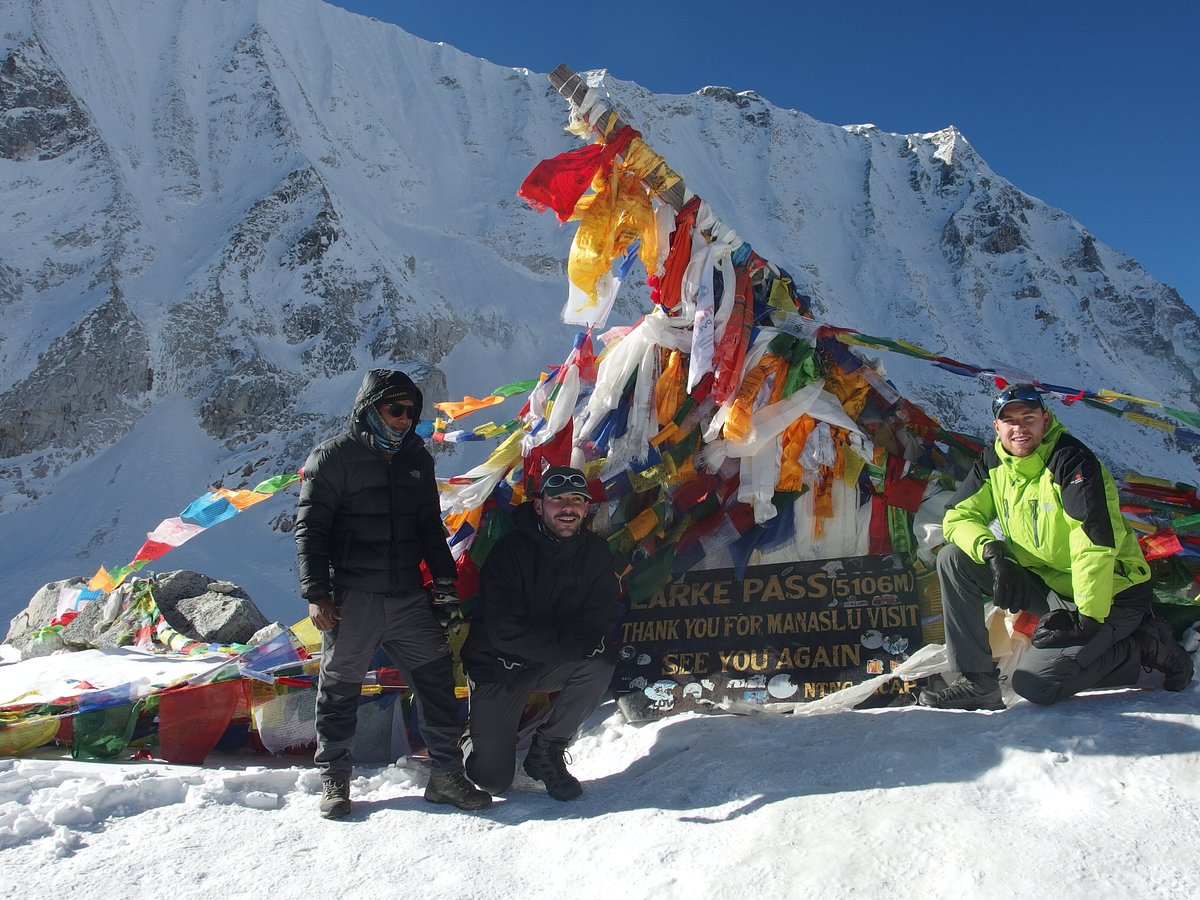Cultural Highlights on Manaslu Circuit Trek

The Manaslu Circuit Trek is more than just a journey through the majestic Himalayas; it is also an enriching cultural experience. This trek takes you through remote villages, ancient monasteries, and settlements that offer a glimpse into the unique traditions, beliefs, and lifestyles of the local communities. The trail is a perfect blend of natural beauty and cultural exploration, making it a favorite for trekkers seeking a holistic adventure. Below, we’ll explore the cultural highlights that make this trek so memorable.
- Diverse Ethnic Communities
The Manaslu region is home to a fascinating mix of ethnic groups, primarily the Gurung and Tibetan communities.
- Gurung Villages: In the lower regions of the trek, you will encounter Gurung settlements. Known for their hospitality, the Gurung people are integral to Nepal’s cultural fabric. You’ll notice their traditional homes, terraced fields, and a way of life deeply connected to nature.
- Tibetan Influence: As you ascend, the Tibetan cultural influence becomes more prominent. Many villages, especially near the Tibetan border, follow Tibetan Buddhist traditions, reflected in their dress, architecture, and festivals.
These communities have preserved their customs for generations, offering trekkers a rare opportunity to witness their traditional lifestyles.
- Traditional Villages
- Samagaun (3,530 meters)
Samagaun is one of the most culturally rich villages on the trek. It is a picturesque settlement surrounded by mountains and filled with traditional stone houses. The village is a spiritual hub, with monasteries and prayer wheels dotting the area. - Samdo (3,875 meters)
Located close to the Tibetan border, Samdo is a small village where Tibetan culture thrives. The people here primarily rely on yak herding and trade, and their homes and monasteries reflect their deep spiritual connection. - Lho (3,180 meters)
The village of Lho offers panoramic mountain views and a chance to experience the local way of life. The Ribung Monastery, perched above the village, is a must-visit for its peaceful ambiance and stunning architecture.
- Ancient Monasteries and Spiritual Sites
The Manaslu Circuit is dotted with ancient monasteries and spiritual landmarks that provide a serene and reflective experience.
- Pungyen Gompa:
Located above Samagaun, this monastery offers breathtaking views of Mount Manaslu. It is a sacred site for the local people, often visited for blessings and prayers. - Ribung Gompa(Lho Village):
A prominent monastery in the region, Ribung Gompa is an excellent place to learn about Tibetan Buddhist practices. Its intricate architecture and tranquil setting are highlights for trekkers. - Tibetan Mani Walls and Prayer Flags:
Throughout the trek, you’ll see Mani walls (stone walls carved with Tibetan prayers) and colorful prayer flags fluttering in the wind. These are symbols of spirituality and protection, believed to bring blessings to all who pass by.
- Tibetan Buddhism and Traditions
The upper Manaslu region is steeped in Tibetan Buddhist culture, which is evident in every aspect of life.
- Festivals: If you time your trek during local festivals, such as Losar(Tibetan New Year), you can witness traditional dances, rituals, and celebrations. These events are vibrant displays of the community’s faith and joy.
- Monastic Life: Many villages have monasteries where monks practice meditation and rituals. Visitors are often welcome to observe these practices, gaining a deeper understanding of Buddhism.
- Yak Herding and Trade
Yak herding is a significant part of life in the high-altitude villages of the Manaslu region. Yaks are used for transportation, milk, meat, and wool. In Samdo, you might see yak caravans carrying goods across the border to Tibet, a tradition that has persisted for centuries.
- Traditional Crafts and Architecture
The villages on the Manaslu Circuit Trek showcase traditional Himalayan craftsmanship:
- Stone Houses: Built to withstand the harsh climate, these houses feature flat roofs and thick stone walls.
- Wood Carvings: Monasteries and homes are often adorned with intricate wood carvings, showcasing the skill of local artisans.
- Handmade Goods: Villagers often craft woolen clothing, rugs, and blankets, which are both functional and beautiful.
- Interaction with Locals
One of the most rewarding aspects of the Manaslu Circuit Trek is meeting the locals. Their friendliness, warmth, and willingness to share stories provide a window into their lives. Many villagers speak basic Nepali and Tibetan, but even non-verbal communication, like smiles and gestures, goes a long way in creating connections.
- Manaslu Conservation Area and Its Cultural Significance
The Manaslu Conservation Area is not only a haven for biodiversity but also a region rich in cultural heritage. The conservation efforts aim to preserve both the natural environment and the unique traditions of the local communities. Visitors contribute to these efforts through permit fees, which support conservation and community development.
- Optional Side Trip: Tsum Valley
The nearby Tsum Valley is a sacred Himalayan pilgrimage site that trekkers can add to their itinerary. Known as the “Hidden Valley,” it is home to ancient monasteries, caves, and a serene atmosphere. The valley is deeply connected to Tibetan Buddhism, and the locals practice unique rituals and customs.
- Cultural Etiquette for Trekkers
To fully appreciate the cultural highlights of the Manaslu Circuit Trek, it’s important to respect local traditions:
- Always walk clockwise around monasteries, chortens (stupas), and Mani walls.
- Ask for permission before entering monasteries or taking photos of people.
- Dress modestly, especially in villages and religious sites.
- Engage with locals respectfully, showing interest in their customs and way of life.
Conclusion
The cultural highlights of the Manaslu Circuit Trek are as captivating as its natural beauty. From the remote villages and ancient monasteries to the enduring Tibetan traditions, this trek offers a unique opportunity to immerse yourself in the rich cultural tapestry of the Himalayas. For trekkers, the experience goes beyond the physical journey, leaving lasting memories of connection, learning, and appreciation for the region’s heritage.
